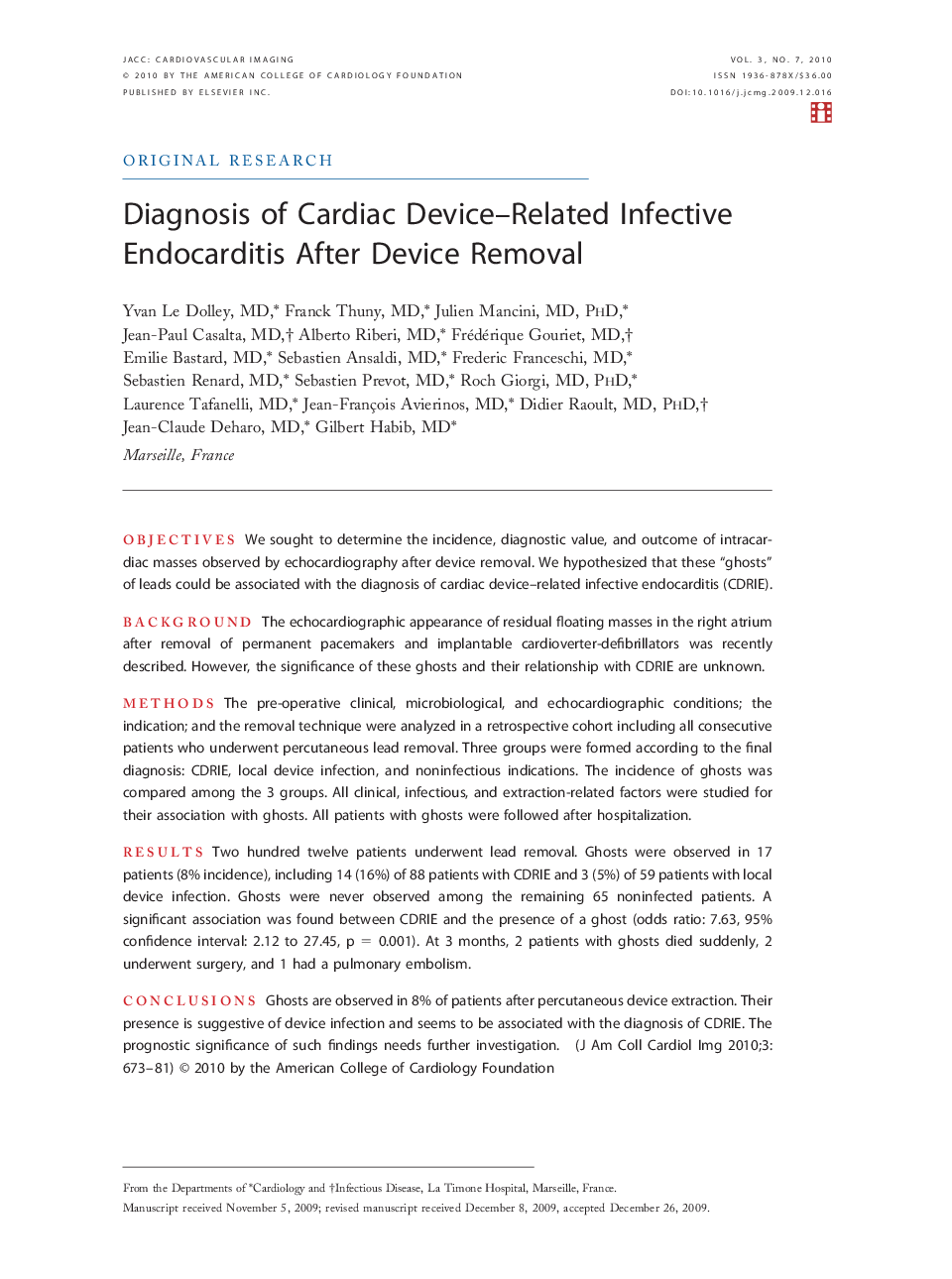| Article ID | Journal | Published Year | Pages | File Type |
|---|---|---|---|---|
| 2939086 | JACC: Cardiovascular Imaging | 2010 | 9 Pages |
ObjectivesWe sought to determine the incidence, diagnostic value, and outcome of intracardiac masses observed by echocardiography after device removal. We hypothesized that these “ghosts” of leads could be associated with the diagnosis of cardiac device–related infective endocarditis (CDRIE).BackgroundThe echocardiographic appearance of residual floating masses in the right atrium after removal of permanent pacemakers and implantable cardioverter-defibrillators was recently described. However, the significance of these ghosts and their relationship with CDRIE are unknown.MethodsThe pre-operative clinical, microbiological, and echocardiographic conditions; the indication; and the removal technique were analyzed in a retrospective cohort including all consecutive patients who underwent percutaneous lead removal. Three groups were formed according to the final diagnosis: CDRIE, local device infection, and noninfectious indications. The incidence of ghosts was compared among the 3 groups. All clinical, infectious, and extraction-related factors were studied for their association with ghosts. All patients with ghosts were followed after hospitalization.ResultsTwo hundred twelve patients underwent lead removal. Ghosts were observed in 17 patients (8% incidence), including 14 (16%) of 88 patients with CDRIE and 3 (5%) of 59 patients with local device infection. Ghosts were never observed among the remaining 65 noninfected patients. A significant association was found between CDRIE and the presence of a ghost (odds ratio: 7.63, 95% confidence interval: 2.12 to 27.45, p = 0.001). At 3 months, 2 patients with ghosts died suddenly, 2 underwent surgery, and 1 had a pulmonary embolism.ConclusionsGhosts are observed in 8% of patients after percutaneous device extraction. Their presence is suggestive of device infection and seems to be associated with the diagnosis of CDRIE. The prognostic significance of such findings needs further investigation.
